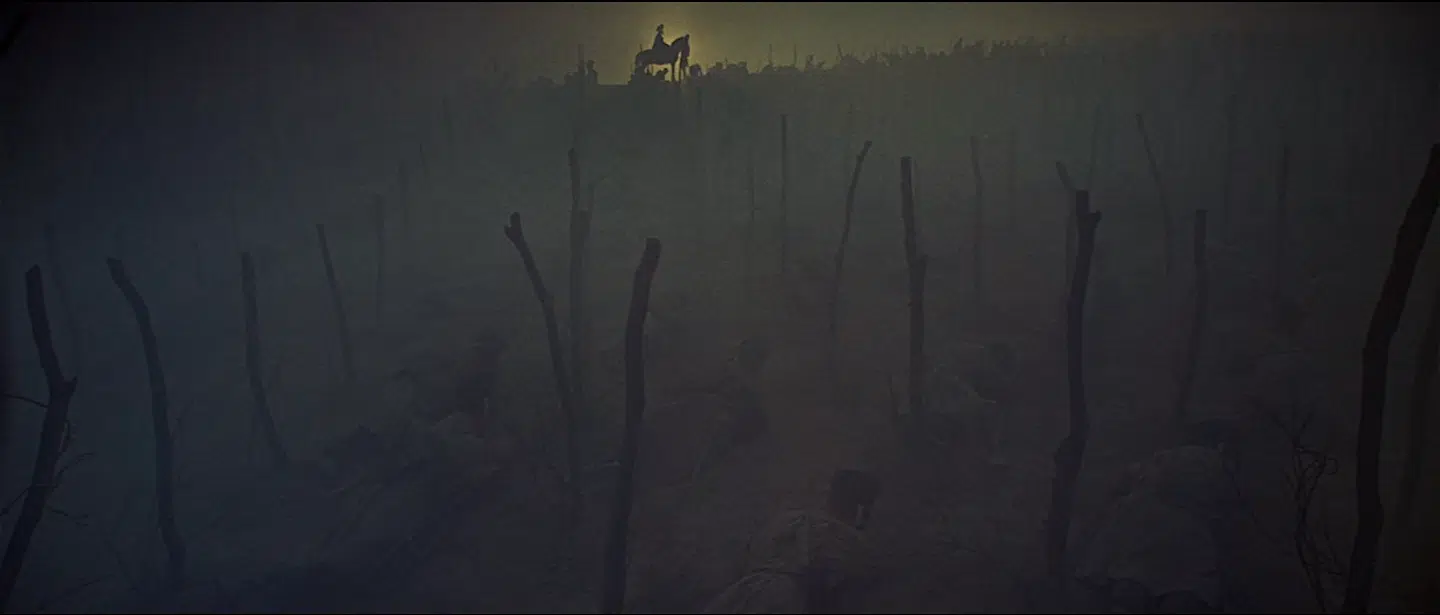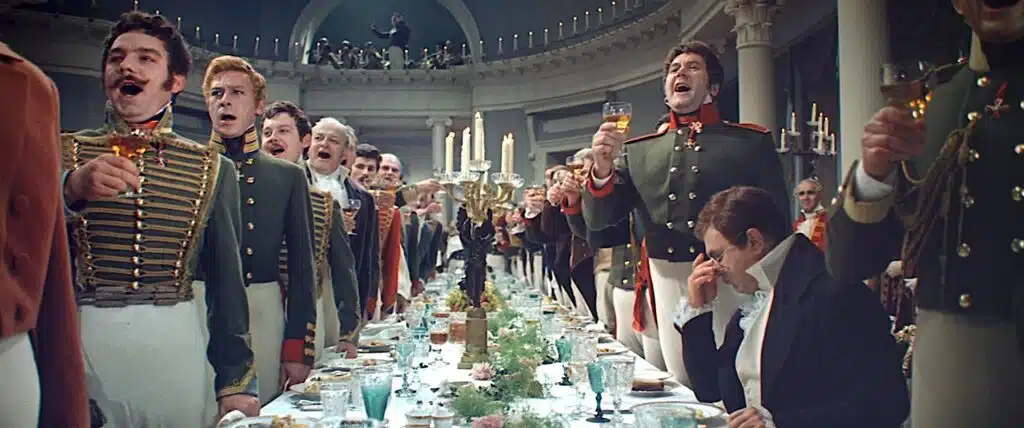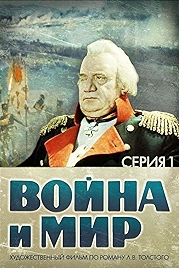So here’s the most expensive film ever made in the USSR, or a quarter of it. War and Peace Part I finally arrived in 1966 after years in the making, a rebuke to the massive 1956 US version starring Audrey Hepburn and Henry Fonda. Here’s how you do Tolstoy, the Soviets are saying, at five and half hours long, with a cast of thousands, no expense spared, big sets, huge battle scenes, and so on.
It was released in four big chunks originally, too, and it’s best watched that way, in instalments. It’s impressive, certainly, shot on 70mm film for that widescreen epic look – though on muddy Soviet film stock – but strangely it hasn’t learned from one of the big mistakes of Vidor’s film, which cast the 50-year-old Fonda as the 20-year-old Pierre Besukhov. Here, the director himself, 40something Sergey Bondarchuk, takes the role of Pierre, the “unhero” surrounded by gallant, dashing men rushing off to fight Napoleon while he himself struggles with his own inadequacy.
An opening quote by Tolstoy about the need for good men to band together when it becomes clear that bad men have done just that dissolves ironically into a series of scenes in St Petersburg, where high society is shown having a whale of a time while outside Napoleon is assembling his men for a march on Russia.
This first film concerns itself with the rising and belated awareness as to what Napoleon is really all about, culminating in the epic Battle of Austerlitz, where an unprepared Russia took a massive pasting and Napoleon looked like he was going to sweep all before him again as he had already done in much of the rest of Europe (as Hitler would later find out, Europe and Russia are two entirely separate propositions).
Back in Petersburg, Pierre the illegitimate son of a vastly rich count unexpectedly comes into the count’s inheritance when the old man dies (and what a death scene – candles, icons, massed choirs) and finds himself being sought out by women who would never have looked at him before, in particular the lovely Hélène (Irina Skobtseva), who soon has her man. Pierre, as in all other matters, is a ninny when it comes to women, a fact Hélène is soon exploiting by having an affair with a dashing officer. These chickens will come home to roost towards the end of Part I, when Pierre, unable to stomach the endless talk about his wife’s infidelity, challenges said dashing officer to a duel.
A parallel story tracks Prince Bolkonsky (Vyacheslav Tikhonov), a stern, heroic, patriotic soldier who leaves his pregnant wife behind in Petersburg to go and fight the good fight against Bonaparte. Bolkonsky is the anti-Pierre, a possessor of the right stuff prepared to put it all on the line in the defence of what’s right.
Though Bondarchuk hasn’t stinted on the production values in the splendid St Petersburg interiors – the film-making is reminiscent of 1930s Hollywood in its framing, colours and economical but obvious use of camera – it’s out following Bolkonsky where this movie comes into its own.
The Soviet government greenlit the project and threw resources at it, including vast numbers of soldiers, all of them dressed up in period costumes and moved around vast battlefields (often shot from above) like chess pieces. While the battles aren’t thrilling – personal jeopardy is largely absent – they are highly impressive in terms of scale and choreography.
Between these two men, soft Pierre and solid Bolkonsky, Bondarchuk seesaws, occasionally pausing for some philosophical musing by Tolstoy – much reduced compared to the original novel – on subjects like the afterlife and what it means to live a good life. The contrast in the two characters is reflected in every aspect of the production – the inaction at home versus the action on the battlefield, the steady (dull, even) camera versus sudden moments of wild experimental technique, the huge panoramas versus the focus on matters spiritual and ethical.
In segments that possibly impressed Terrence Malick, Bondarchuk ends his first instalment as he began it, with lush nature shots, the plains of Russia as seen by an alien eye. Emblematic of a film that’s not in any rush to tell its story, determined to fit in as much of Tolstoy as it can manage and aiming for what would now be called the immersive experience. It very much is. Take that, King Vidor.
War and Peace the Criterion box set – Watch it/buy it at Amazon
I am an Amazon affiliate
© Steve Morrissey 2022


